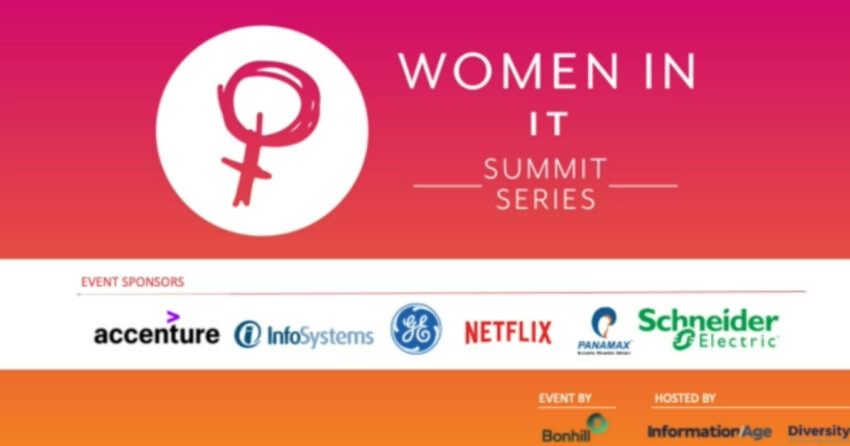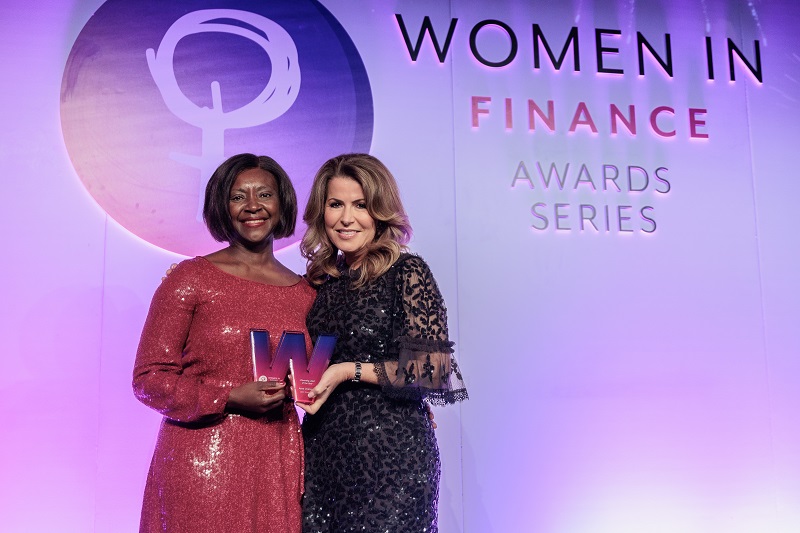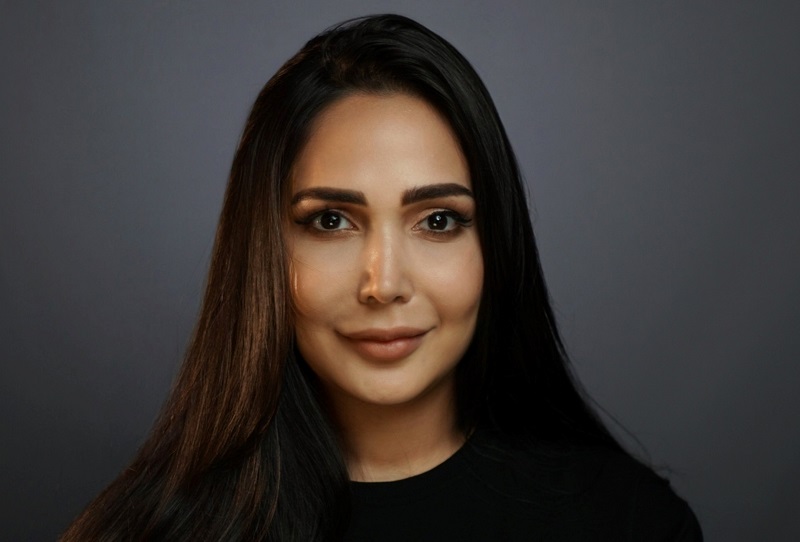The Women in IT USA summit was the first in a two-part series this year and covered crucial D&I issues including performative vs effective allyship, multigenerational workforces, and the business case for disability representation.
Of all sectors, tech is where lack of diversity is most obvious; where women, ethnic minorities, those with disabilities, and LGBT+ people continue to be underrepresented. Yet tech is mostly seen as a male-dominated sphere, where women make up just 25% of the workforce in the world’s big tech firms.
With more intersectional topics being explored in addition to gender representation in technology, the Women in IT Summit USA Part 1, which featured the contributions of successful female tech professionals from a range of identities, was a fitting way to discuss the experience of women in tech today.
The Women in IT Summit USA 2021
Salwa Rafee Global Managing Director, Healthcare & Public Sector Security at Accenture presented the first keynote session of the Women in IT Summit USA 2021 entitled: “Gender Equality – If Not Now, When?” She said despite women being the dominant population in the world, (around 51%) they are poorly represented in the tech industry, where at early education stages, harmful stereotypes about female aptitude in STEM affect their entry into this world.
How female inclusion can shift organisations
She said COVID-19 had affected the economic gender gap; where women experienced more decline in their earnings, were twice as likely to be made redundant, and felt less secure in jobs and less included in the workplace. Despite this, she said that women in STEM bring many values to the workplace, including “a strong sense of equality and inclusion” and “innovation and purpose.”
She said human values such as “inclusion, diversity and social responsibility are critical when it comes to developing software systems.” But traditionally, tech underestimates these values, “focusing more” on things like “cost and performance.” With software and particularly AI now “running our world”, it is essential, she said, that human values are embedded in the software we build or “we may end up with a society misaligned with what makes us human.”
She referred to a recent report by Harvard Business Review that said adding women to the C-suite changes “how companies think and operate” where they can become more profitable, socially responsible, have higher quality customer experience, better business outcomes, and embrace transformation. She also said that womens’ presence in “any company” makes them “collectively more open to change and more calculated risk.”
Women in IT Summit USA 2021: building cross-generational collaboration
Later on during the Women in IT Summit USA 2021, there was a panel discussion on “Let’s Talk About… Multi-Generational Workforces”; the speakers were Chriss Nelson, President at Trans Minors Rights, Marley Melbourne, a student at Havergal College, John Comacchio, Senior Vice President & CIO at Teknion, Paula Hunter, Executive Director at Mojaloop Foundation and Nasheen Liu, Partner & SVP, CIO Program Strategy at The IT Media Group.
Liu said her generation, (Generation X) could be the glue to link the workforce together, as they were at the bridge of analogue and digital processes. She also that employees must work to dismantle unfair perceptions about other generations, such as Gen X workers being “cynical”, as doing this will foster greater collaboration.
Comacchio said opening up the lines of communication is key, where the “workforce will come together, gel, and make things happen.” He added that workforces should operate as a “learning society” to achieve this.
He also said mentorship was an effective way to ensure cross-generational collaboration but said mentees have to be explicit about why they want to mentored, who by, and what they want to get out of it.
Melbourne said mentorship could help build confidence, drive, and aspirations for younger workers. However, she said it could benefit the mentor as well, where they “could learn from each other.”
Hunter agreed with Melbourne’s point and said that having someone “shadow a project” could be useful, which brings a fresh perspective to the mentor, where the mentee can ask questions about why things were done.
Hunter said that having empathy is crucial for cross-generational collaboration, where building understanding of staff and their different lives is essential. She also suggested that workforces “drop their organisational boundaries,” when communicating and try casual, verbal discussions.
Nelson said it was important to concentrate on the “individual strengths” staff have, where ability is more important than factors such as age when professionals go for jobs or promotions. They also said that millennials are “used to adapting to new technologies” having grown up during times of rapid digital transformation.
Performative allyship in the workplace
Madison Butler, VP, People & Impact at GRAV, and Trish Foster, Executive Director, The Center for Women and Business at Bentley University, closed the morning session with “Steering Clear of Performative Allyship.” The pair discussed setting up a workplace that encourages active allyship.
Foster said that over the past year, we’ve all come to learn more “about the lived experiences” of people with unique identities but said there’s a disconnect between the intent of an ally and delivering effective allyship, known as performative allyship. She added that a “lack of understanding and fear can lead to performative allyship” where what is needed is “more training, tools, and accountability” to ensure genuine allyship.
She gave examples of performative allyship in an organisation, such as when a business professes to value a diverse workforce, but only recruits talent that looks and sounds like the majority. Apart from company-wide allyship initiatives, she said that showing daily support, such as lightening a colleague’s workload who might be experiencing trauma, was a good way to perform genuine allyship.
Butler said that over the past year, many people wanted to “say something” to prove their allyship which is different from “doing something,” where allyship, she said, is a verb, not a noun. She added that “allyship is intersectional” where it is inauthentic if people only support certain groups and not others.
Butler added that in corporate America, it’s often not accepted for employees to be emotional, where she said that humans and their emotions are “messy”, and that culture needs to change to allow employees to be themselves at work, including whatever they might be going through personally.
She also said that if organisations build inclusive workplaces for the most marginalised communities, it will also work for other groups, including the most privileged workers, such as straight white men.
Butler had some examples about when allyship can go wrong, such as when people stand up for colleagues that they feel might be being subjugated in the workplace, such as being spoken over by someone else. She warned that potential allies should not “speak up for people’s lived experiences”, nor should they try and emulate another person’s way of speaking or acting to find common ground, where Butler referenced her own personal experience of this as a Black woman where this happened to her, as this is offensive.
Disability employment and inclusion
Tiffany Yu, CEO at disability community, Diversability presented the first-afternoon session entitled “Bringing Disability Representation to the Forefront.”
Yu spoke about the Americans with Disabilities Act of 1990, which recently had its 30 year anniversary. She said that one of its pillars of disability inclusion, namely “economic self-sufficiency” hadn’t made much progress.
“Before the pandemic, roughly 80% of disabled people were unemployed”, said Yu, who also said the pandemic escalated redundancies for disabled people, who account for around 61 million people in the United States.
As a “disabled woman of colour”, Yu said she didn’t see anyone that looked like her growing up, and added that while furthering female representation in tech is important, more attention needs to be paid to “women at the intersections” in the industry such as women of colour, transwomen and disabled women.
“Far too frequently in the DEI conversation disability is usually missing, even though we are the fastest-growing minority population in the world,” she said.
She added that policy change and attitudinal change are essential to furthering inclusion as many disabled people hide their disabilities at work, suggesting that workplaces lack psychological safety.
She also said how important it is for everyone to see “accessibility as part of the human experience” and that “technology is a way to advance all of our lives so we can show up as our full unapologetic selves.”
She outlined the business case for disability inclusion, where firms that promote it have a 28% higher revenue. She said that the disabled community has a purchasing power that exceeds tens of billions of dollars, which means that tech organisations that are building products and services that aren’t accessible to this group are missing a trick.
The purpose of adaptability
Mike Raven, Co-Founder at workplace adaptability firm AQai provided a masterclass on “Embracing Adaptability for Lasting Change” where he covered new routines and working styles.
He said adaptability is “worth the time and focus” for employers, where a recent global LinkedIn learning report said it was the most important skill to learn this year, where those with low adaptability were more likely to have faced reduced wellbeing during the pandemic as working styles changed.
He said mindset is an essential part of adaptability, but it depends on what “information and data” you’re feeding yourself and whether it’s “positive” or not, such as “diversity is good” or that “change is bad.”
Raven called it “the environment of your mindset” which can be influenced by the information you read or the people that you surround yourself with, as this “shapes your mindset.” Raven gave an example of improving your mindset by consuming news and online information providers that cover positive subjects, such as “removing toxic masculinity.”
He also said “unlearning” is another kay part of adaptability, such as what you might have “let go off during the pandemic.” He added that “holding onto things” can be a barrier to effective adaptability.
The day’s closing panel was called “Open Your Doors to the Future Innovators” and featured Kyra-Lee Harry, Founder & CEO at Future Change Makers Academy, Evelyn Nomayo, Leader & Founder at Phase Innovate, Lawrence Fauntleroy, Director at CUNY 2X/Tech Talent Pipeline, and Ashley Miller, Managing Director at Accenture and B Pagels-Minor, Senior Data Product Manager at Netflix.
To hire diverse talent, Fauntleroy said it’s about companies being “willing to take the risk,” where it’s an exercise in the company’s future as well as that of graduate talent pools.
Nomayo said companies have to “get them while they’re young,” where apprenticeships are effective and organisations can train young talent to blend with their company’s culture.
When trying to attract school-level women to the sector, companies should also “introduce computer science as a problem-solving discipline,” which tends to attract girls more, she added.
Harry agreed with the value of apprenticeships, which she said means organisations “already have” the young talent they need, where they can learn the necessary skills to excel in roles and in turn, train and support the next cycle of young talent entering the workplace.
Pagels-Minor said that between colleagues, “educating each other” on their different identities and experiences is a great way to create empathy between different groups in the workplace and that humanising the workforce is essential to effective collaboration.
To register your interest for Women in IT USA Summit Part 2, scheduled to take place on October 13, 2021, click here.









